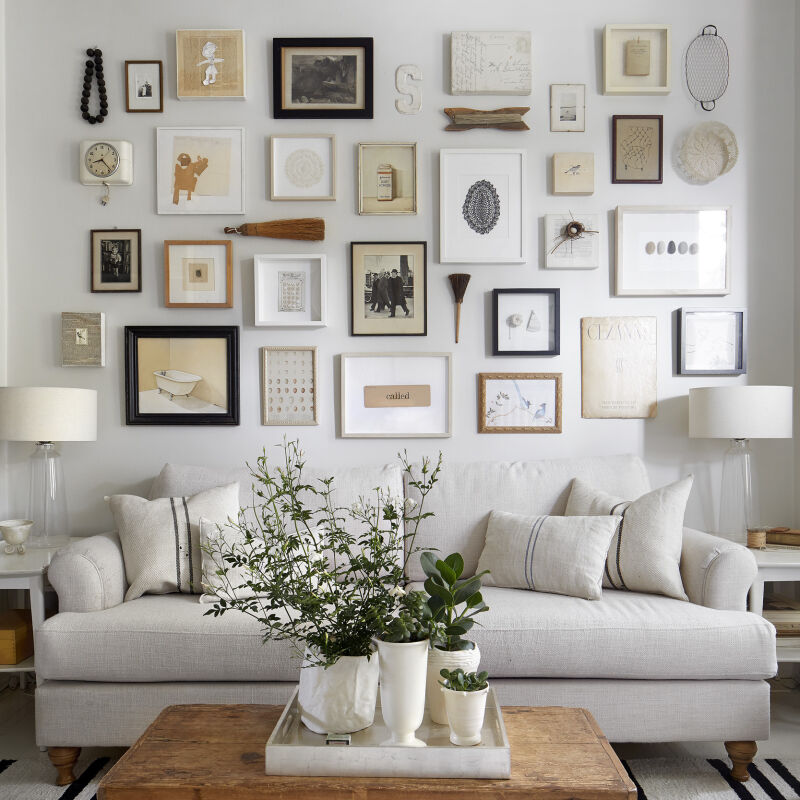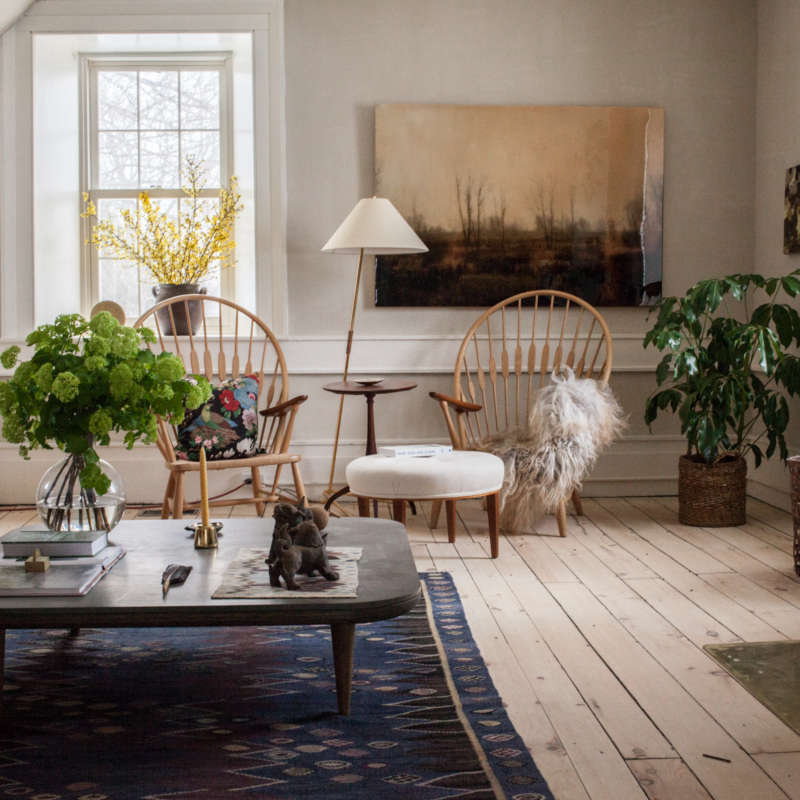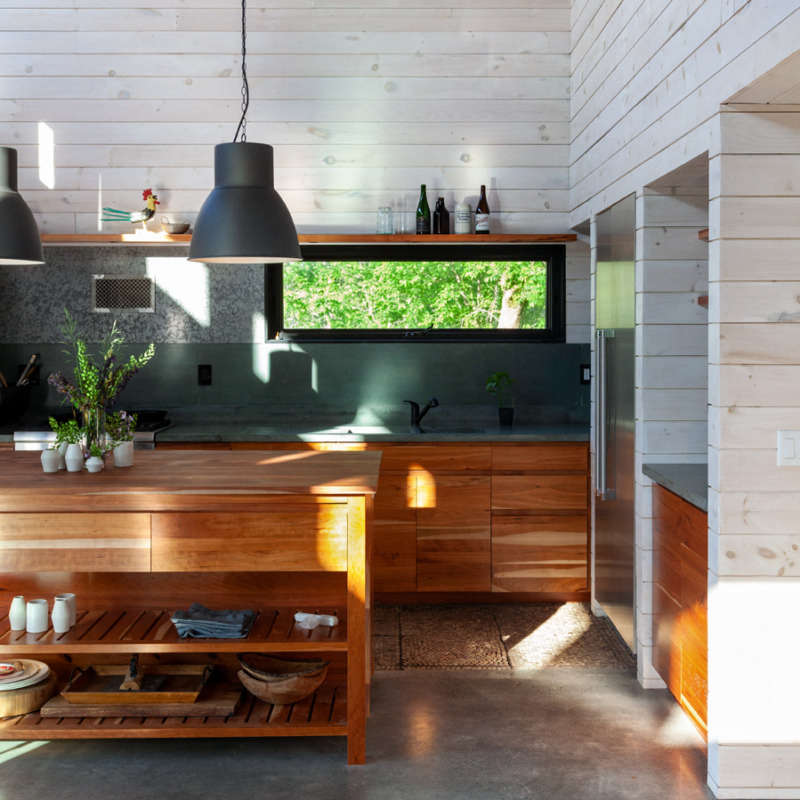All of us here at Remodelista, Gardenista, and The Organized Home are invested in reducing waste, minimizing plastic, and using more natural products in our lives. In my own home, I’ve decreased my family’s reliance on paper towels in the kitchen (see Smart Buy, Everything-Old-Is-New-Again Edition: Roller Towels from the UK); swapped out harsh cleaning products for more natural ones (see The Minimalist: The Only 4 Ingredients You Need to Clean Your Entire Home); learned to recycle better and more (see Are You Recycling Wrong? Probably! 6 Common Recycling Mistakes to Avoid); and committed to bringing along my reusable cup for coffee runs (see 8 Favorites: Travel Coffee Mugs Our Editors Use and Love). But there’s one area I’m having a hard time greenifying: my beauty routine.
Enter Linh Truong, who, along with her husband, owns The Soap Dispensary in Vancouver. (Go here for our story on their new companion store, Kitchen Staples.) Established in 2011, it’s the city’s first dedicated refill shop specializing in soaps, cleaners, personal care products, and DIY ingredients. The store’s BYOC (bring your own container) concept encourages low-impact living and less waste, two ideals we fully endorse.
I reached out to Linh for tips on how to streamline and simplify, with an eye toward sustainability, my beauty and hygiene routines. Here are her 8 suggestions.
Photography courtesy of The Soap Dispensary.
1. Adopt a natural dental hygiene routine.

“My routine is very simple. I use a bamboo toothbrush, refillable mineral-based toothpaste, and compostable silk floss. A regular toothbrush is generally not recyclable and is garbage at the end of its life. With a natural toothbrush, either the whole thing (if the bristles are natural) or the handle is compostable, leaving you with much less garbage,” says Linh, who suggests periodically sanitizing your toothbrush in either hydrogen peroxide, cleaning alcohol, or mouthwash for 10 minutes to extend its life. “Most dentists will tell you to change your toothbrush every three months or after having the cold or flu. [But if you sanitize it], a toothbrush can last you for years!”
Linh uses Uncle Harry’s natural toothpaste, but she says that you can also easily make your own with a mixture of baking soda and coconut oil. “I have had chats with my dentist about using natural oral care products, and his verdict is that it doesn’t matter what you use to brush with, as the act of brushing is what cleans.” If you require fluoride, she suggests getting it via a fluoride rinse. As for floss, she recommends compostable Dental Lace.
2. Stop using cotton balls.
“You can easily find or make reusable cotton pads to replace cotton balls. You can find them from Etsy vendors, online stores, and possibly local eco shops in your community. You could also cut up some old cotton flannels sheets or clothes or buy new fabric. Cut the fabric into about 2-inch squares or circles and sew them together. Then use, wash and repeat!”
3. Buy in bulk.

Bring your own containers to refill soaps, cleaners, oils, and more in bulk. (Don’t have a refill store like The Soap Dispensary near you? Go here for a good list of online bulk-shopping options.) “We refill about 800 bulk products in our shop! This includes basics like hand soap and shampoo, but we also refill more specialty products such as bubble bath, deodorant, mouthwash, hair gel, shaving cream, lotions, foundations, face powders, face creams and cleansers, sunscreen, baby soap, bath salts, henna, etc.,” says Linh.
As for how to choose a carrier, “I recommend using containers that are easy to refill and wash when you need to. For example, liquid soap would be easier to pour out of a bottle with its smaller opening but dry ingredients like clays or epsom salt are best in containers with larger openings like jars. I personally love using amber Boston Round bottles as they look classy, are sturdy, and the dark glass protects the ingredients from direct light which could degrade oils.”
4. Choose bar soap over liquid soap.

“If you don’t have the ability to refill your liquid soap, then bar soaps are definitely better. And if you are using a natural bar soap, you can use it for everything! Shampoo, shave soap, hand soap, body soap, and—in a pinch or when traveling—a natural bar soap can also be laundry soap, stain remover, and dish soap!”
5. Opt for multipurpose products.

“The Environmental Working Group says that an average women on a daily basis uses 12 products, containing 168 different chemicals in them. For me, simplification starts with eliminating as much of the chemicals as possible. Everything is related. Chemicals on your body also means chemicals in the environment, whether from manufacturing or the runoff of using it. And those products will most definitely come in terrible packaging anyways,” says Linh.
She advises to “invest in quality, not quantity. And of course, invest in products that have multiple uses. The Universal Crème from Elate Cosmetics beautifully colors my lips and cheeks.”
6. Avoid microbeads.

Microbeads are small plastic particles used for their scrubbing properties in body washes, exfoliators, toothpastes, and other household products. They have been banned in many countries, including Canada, the UK, and the US (where they’re no longer allowed to be used in beauty and health products).
“Please, please stop using any beauty or hygiene products with microbeads,” she implores. “It is a completely unnecessary agent in our products, one that can easily be replaced by natural alternatives and causes very serious environmental pollution in our local and global water systems. Microplastics are generally too small to be filtered out of our water treatment plants and get washed out to local water ways that then connect to larger systems such as lakes and oceans. Microplastics absorb toxins in the water and are mistaken for food by marine life. It causes toxicity and starvation in these marine creatures and then moves up the food chain.”
7. Don’t be afraid to try menstrual cups.
“I have used a menstrual cup for many years, and as my period has changed, I now just use reusable pads and period panties. It’s an investment upfront but a huge financial and environmental savings in the long run. It may take a few years to build up your collection of reusable pads but they really can last you for many years. For me, my collection will definitely last me into menopause. As with the toothbrush, I don’t believe in replacing your menstrual cup every year like some brands recommend. Sterilize your cup monthly and it can last you many years as well.”
8. Consider a DIY approach.

“DIY is the solution to so many problems around chemicals, packaging waste, and possibly, unwittingly supporting animal testing or powerful conglomerates that are polluting the earth. When you make your own products, it is almost an act of social rebellion, a taking back of skills and knowledge we are told we don’t need in our consumer culture. When you make something, you know exactly what is in it and you can customize it to suit your particular needs. And of course, DIY is almost always more cost effective. Many people say they don’t have time or skills but it doesn’t have to be complicated. In fact it is quite fun and empowering.”
Her favorite DIY beauty recipe? A basic salve that can be used as a lip balm, moisturizer, cuticle cream, dog paw salves, cutting board conditioner, and more!
Ingredients:
-1 cup organic olive oil (many people like to do a blend of oils or oils with cosmetic butters for added richness)
– 1 oz of beeswax (adjust wax amount according to preference for salve hardness)
Directions:
- Combine in a double boiler, stirring occasionally until the wax melts.
- Pour into glass jars or tins. The liquid will solidify into a salve pretty quickly.
Note: “You can add anti-inflammatory ingredients like calendula to treat inflammation on the skin, antibacterial ingredients like neem or tea tree oil for cuts and abrasions, essential oils for a solid perfume, and colors via micas for lip tints,” says Linh.
For more on DIY natural products, see:
- DIY: Homemade Hand Sanitizer
- 3 DIY Cleaning Recipes for a Healthy, Happy Home
- DIY Essential Oils in the Home: Make an All-Purpose Cleaner
Frequently asked questions
What is sustainable beauty?
Sustainable beauty refers to using eco-friendly, non-toxic products that are made with natural ingredients and don't harm the environment.
Are natural beauty products better than non-natural products?
Natural beauty products may be better for the environment, but they are not necessarily better for your skin. It's important to choose products that are both safe for you and the environment.
What are some sustainable beauty tips?
Some sustainable beauty tips include using refillable containers, using multi-purpose products, choosing products with biodegradable packaging, and avoiding single-use products.
What should I look for in sustainable beauty products?
Look for products that are made with natural, organic ingredients, free from harmful chemicals, and are packaged in recyclable or biodegradable materials.
Can I still have a luxurious beauty routine while being sustainable?
Yes, absolutely! There are many luxurious beauty products that are also sustainable and eco-friendly. It's all about finding the right products for you.
Why is it important to switch to a sustainable beauty routine?
Switching to a sustainable beauty routine helps reduce your environmental impact, as well as helps keep harmful chemicals out of your body. It's a win-win for both you and the planet.
What are some ingredients to avoid in beauty products?
Some ingredients to avoid in beauty products include parabens, phthalates, sulfates, and synthetic fragrances.
Can I make my own sustainable beauty products?
Yes, making your own beauty products can be a great way to control what goes into them and reduce packaging waste. There are many DIY recipes available online.





Have a Question or Comment About This Post?
Join the conversation